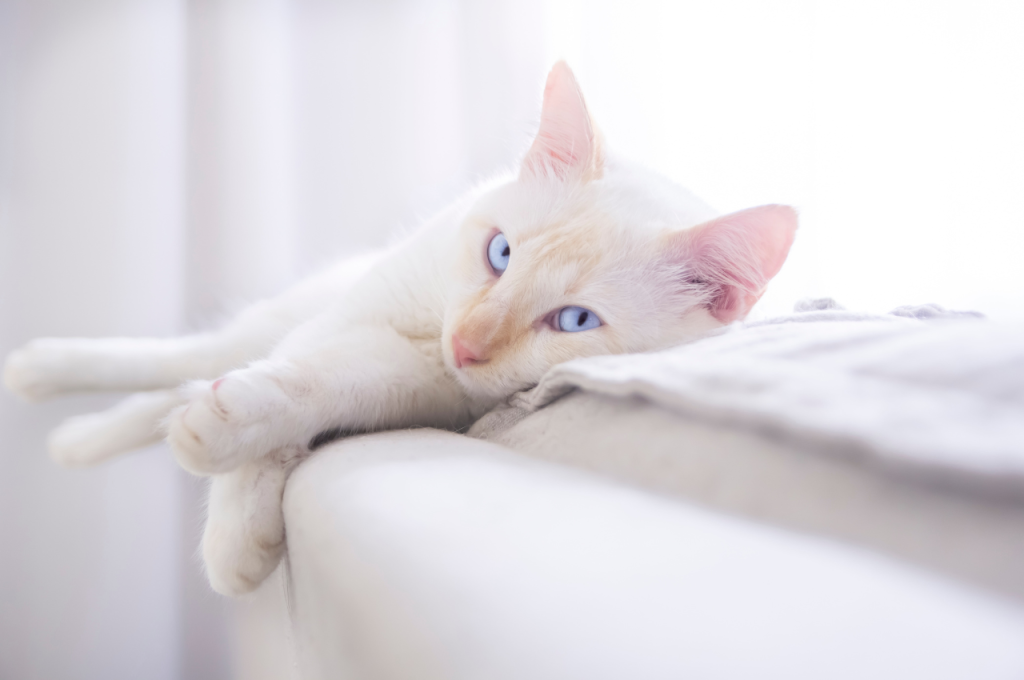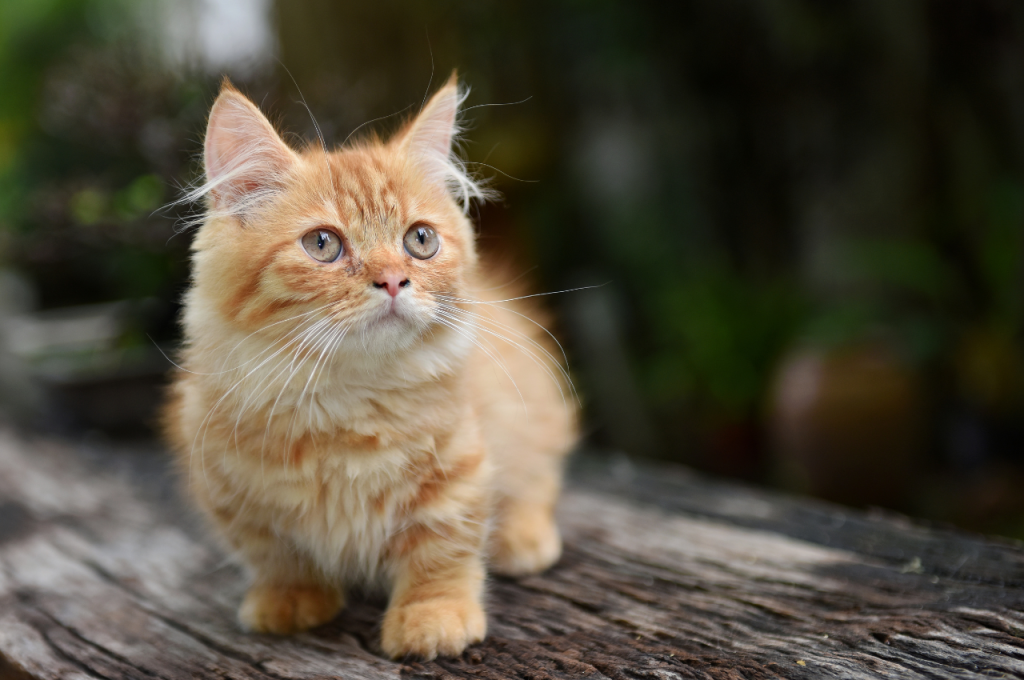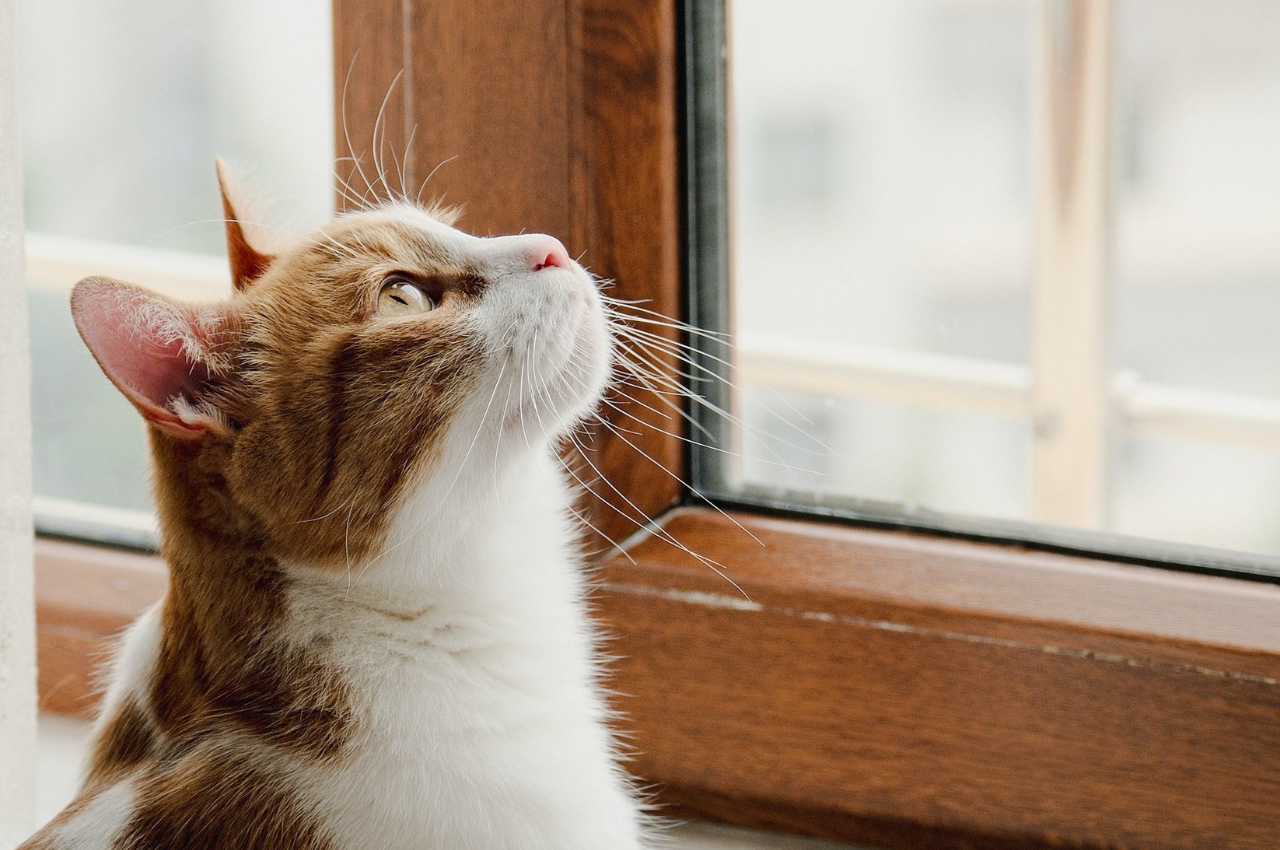Stereotypical behaviors in cats are repetitive, unvarying actions that serve no apparent purpose. These behaviors are often seen in cats that are kept in a confined space or lack proper stimulation.
Some examples of stereotypical behaviors in cats include excessive grooming, tail chasing, and compulsive scratching. These behaviors can be harmful to the cat’s physical and mental well-being, and it is important for cat owners to provide their pets with an enriching environment that encourages natural behaviors.
We will explore the causes of stereotypical behaviors in cats, how to recognize them, and what steps can be taken to prevent or reduce them.
Introduction To Feline Stereotypes
Feline stereotypes often include behaviors like aloofness, independence, and aggression. However, not all cats fit these stereotypes. Some may be affectionate and sociable. Understanding that individual cats have unique personalities helps dispel these inaccurate generalizations.

Misconceptions Vs. Reality
Cats have been the subject of many stereotypes over the years, and these stereotypes have led to misconceptions about their behavior. Many people believe that cats are aloof, unaffectionate, and independent creatures who are only interested in their own needs. However, the reality is quite different. While cats may not be as demonstrative as dogs, they are highly social creatures who love attention and affection from their owners. In fact, many cats are quite needy and will follow their owners around the house, meowing for attention.
The Role Of Genetics And Environment
The behavior of cats is influenced by both genetics and environment. Some breeds of cats are more prone to certain behaviors than others. For example, Siamese cats are known for being vocal and demanding, while Persian cats are typically more laid back and less active. However, the environment in which a cat is raised can also have a significant impact on its behavior. Cats who are raised in a loving and nurturing environment are more likely to be social, affectionate, and well-behaved than cats who are raised in a stressful or neglectful environment.
In conclusion, feline stereotypes are not based on reality. Cats are highly social creatures who crave attention and affection from their owners. While genetics and environment can play a role in a cat’s behavior, it is important to remember that each cat is an individual with its own unique personality. By understanding and appreciating these differences, we can build strong and loving relationships with our feline companions.
The Aloof Cat Myth
Many people believe that cats are aloof and independent creatures, but this is actually a myth. The aloof cat stereotype has been perpetuated for years, leading to misconceptions about feline behavior. In this section, we will delve into the origins of the aloofness stereotype and explore the social bonds that cats form.
Origins Of The Aloofness Stereotype
The origins of the aloofness stereotype can be traced back to the early domestication of cats. Unlike dogs, which were bred for specific tasks and companionship, cats were initially valued for their ability to control pests. This utilitarian view of cats led to the misconception that they are solitary and uninterested in human interaction. However, modern research has debunked this myth, revealing that cats are capable of forming strong bonds with their human caregivers.
Social Bonds In Cats
Cats are social animals that form deep connections with their human companions and other pets in the household. They communicate through body language, vocalizations, and physical affection. Contrary to the aloof stereotype, many cats seek out human attention and enjoy being part of a social group. By understanding the true nature of feline behavior, we can dispel the myth of aloofness and appreciate the unique social dynamics of cats.
Midnight Crazies: Understanding Nocturnal Behaviors
Cats display stereotypical behaviors at night, known as “Midnight Crazies. ” These behaviors include zooming around, yowling, and pouncing on imaginary prey. Understanding these nocturnal activities can help cat owners provide enriching environments and promote healthy sleep patterns for their feline companions.
Natural Instincts At Play
Cats are known for their independent and mysterious nature. Even though they may seem calm during the day, they can exhibit peculiar behaviors at night. These behaviors are often referred to as the “Midnight Crazies” or “Nocturnal Behaviors.” Understanding why cats display these behaviors can help us provide them with a suitable environment and ensure their overall well-being. One of the main reasons behind these nighttime antics is the natural instincts of cats. Cats are crepuscular animals, which means they are most active during dawn and dusk. This behavior is rooted in their hunting instincts, as their prey is often more active during these times. These instincts have been ingrained in them over centuries of evolution, and even though domesticated cats no longer need to hunt for their food, these behaviors still persist. During the night, cats may exhibit behaviors such as zooming around the house, pouncing on imaginary prey, and scratching furniture. These actions mimic their hunting rituals and serve as a way for them to burn off excess energy. It is essential to understand that these behaviors are perfectly natural for cats and should not be discouraged or punished.
Mitigating Nighttime Activity
If your cat’s nighttime antics are causing disturbances or sleep disruptions, there are several strategies you can employ to help mitigate their activity during these hours. Creating a conducive environment for your feline friend can help redirect their energy and provide them with appropriate outlets for their natural instincts.
- Playtime: Engage in interactive play sessions with your cat during the evening hours. Use toys that simulate hunting, such as feather wands or laser pointers, to allow them to engage in their natural behaviors. This will help tire them out and reduce their nighttime activity.
- Environmental Enrichment: Provide your cat with a stimulating environment during the day by incorporating toys, scratching posts, and climbing structures. This will help keep them mentally and physically engaged, reducing the likelihood of excessive nighttime activity.
- Feeding Schedule: Consider adjusting your cat’s feeding schedule to align with their natural hunting instincts. Offer a larger meal just before bedtime to satisfy their hunger and potentially encourage a more relaxed demeanor during the night.
- Distraction Techniques: If your cat tends to wake you up during the night, try providing distractions such as puzzle toys or treat-dispensing toys. These will keep them occupied and divert their attention away from disruptive behaviors.
Remember, it is crucial to be patient and understanding when dealing with your cat’s nocturnal behaviors. By providing them with appropriate outlets for their energy and instinctual behaviors, you can ensure a harmonious living environment for both you and your feline companion.
Territorial Tendencies In Cats
Territorial tendencies in cats can lead to stereotypical behaviors such as urine spraying, scratching furniture, and aggressive behavior toward other animals. Understanding these behaviors can help cat owners provide appropriate enrichment and create a harmonious living environment for their feline companions.

Cats are known for their territorial behavior, which is deeply ingrained in their natural instincts. Understanding and recognizing the signs of territorial tendencies in cats can help cat owners create a harmonious environment for their pets.
Marking Their Domain
Cats have a strong instinct to mark their territory, often through scent marking. This behavior involves rubbing their scent glands against objects, as well as urinating in specific areas to establish ownership.
Inter-cat Relations And Territory
Cats are solitary creatures by nature, and they often prefer to have their own space. When multiple cats share a living space, conflicts may arise as they establish boundaries and attempt to assert dominance. By understanding these territorial tendencies, cat owners can take proactive measures to help their feline companions feel secure and content in their environment. Overall, being mindful of a cat’s territorial nature is crucial in ensuring a peaceful coexistence between feline companions and their human counterparts.
The Curiosity Conundrum
Cats are famously known for their curious nature, often getting themselves into all sorts of mischief as they explore their surroundings. This innate curiosity is an integral part of their behavior and can present both risks and benefits. Understanding the curiosity conundrum in cats is essential for nurturing a safe and stimulating environment for our feline friends.
Risks Vs. Benefits Of Exploration
Exploration can lead to your cat discovering new and exciting things, providing mental stimulation and preventing boredom. However, it also exposes them to potential dangers such as toxic plants, small objects that could be ingested, or hazardous areas where they could get stuck or injured.
Nurturing A Safe Environment
Creating a safe environment for your cat involves carefully assessing potential hazards and taking steps to mitigate them. This includes securing toxic substances, removing small objects that could be swallowed, and ensuring that windows and balconies are inaccessible to prevent falls.
Feline Finickiness With Food
Cats are known for their finicky eating habits, often exhibiting stereotypical behaviors such as sniffing, pawing, or even outright refusing certain foods. This selective nature can be attributed to their strong sense of smell and taste preferences, making it important for cat owners to find the right balance of nutrition and palatability to keep their feline friends happy and healthy.
Picky Eaters Or Instinctive Behavior?
Cats’ selective eating habits are often seen as picky behavior.
Choosing The Right Diet For Your Cat
Consider your cat’s age, health, and preferences. Cats may refuse food due to texture or taste. Provide a balanced diet to meet nutritional needs. Consult your vet for diet recommendations.
The Myth Of The Solitary Cat
Cats are often stereotyped as solitary creatures, but the reality is quite the opposite. They have social needs that are integral to their well-being.
Social Needs Of Felines
Cats thrive on social interactions with other cats and even humans. They enjoy companionship and form strong bonds with those around them.
Fostering Friendships Between Cats
- Provide multiple resources like food bowls and litter boxes.
- Give them spaces to retreat to when needed.
- Engage them in playtime and interactive activities.
Laser Pointers: A Controversial Toy
Stereotypical behaviors in cats are repetitive actions that serve no apparent purpose. Common examples include excessive grooming, scratching, and meowing. While these behaviors may seem harmless, they could indicate an underlying issue that needs to be addressed. Laser pointers, a popular toy among cat owners, have been a subject of controversy as they can reinforce these behaviors and potentially cause harm to the cat’s mental and physical health.
Why Cats Are Obsessed
Cats are drawn to laser pointers due to their instinctual prey drive.
Potential Issues And Safer Alternatives
Using laser pointers can lead to frustration and anxiety in cats. Laser pointers are controversial toys among cat owners. Cats chase the elusive red dot with endless energy. Some cats may experience frustration and stress due to the unattainable target. It’s crucial to provide safer alternatives for playtime. Avoid using laser pointers and opt for interactive toys instead.
Embracing Our Feline Friends
Stereotypical behaviors in cats are common patterns of behavior that can include excessive grooming, scratching furniture, and marking territory. Understanding these behaviors can help us provide appropriate care and enrichment for our feline friends, ensuring their well-being and a harmonious living environment.

Beyond The Stereotypes
Cats may exhibit stereotypical behaviors, but they are unique individuals with diverse personalities.
Creating A Fulfilling Environment For Cats
Providing enriching activities and a safe space encourages healthy behaviors in felines. Understanding and accepting cats’ behaviors can lead to a stronger bond with our beloved pets.
Conclusion
Understanding stereotypical behaviors in cats is crucial for pet owners. By recognizing and addressing these behaviors, you can ensure your feline friend’s well-being. From excessive grooming to aggression, each behavior has a reason behind it. Remember, patience and love are key in managing and modifying these behaviors for a harmonious relationship with your cat.
